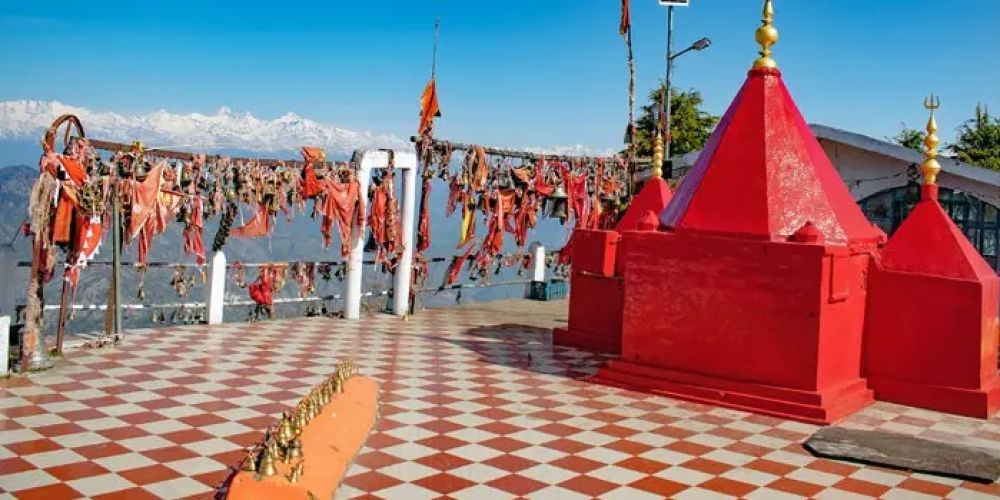

The Dhwaj Temple, perched atop the Dhwaj peak, is a revered shrine for both Shiva and Maa Jayanti devotees. It is situated in the idyllic Pithoragarh district of Uttarakhand, India - a region known for its natural beauty and spiritual significance. The temple sits at an elevation of approximately 2,100 meters, offering panoramic views of the snow-clad peaks of the Himalayas and the lush valleys below.
The origins of the Dhwaj Temple trace back to ancient times, although the exact date of its foundation remains shrouded in mystery. It is said to have been an important pilgrimage site for centuries, attracting devotees who have braved the steep trek to seek blessings. The temple is named after the Dhwaj peak, which holds great religious importance in Hinduism, symbolizing the flag of the divine.
The festival of Maha Shivaratri is particularly special at the Dhwaj Temple, as it draws a large number of pilgrims from surrounding villages and states. Over the years, the influx of visitors during this auspicious event has put the Dhwaj Temple on the religious tourism map of India.
The Government of Uttarakhand, along with local authorities, has been instrumental in the development of infrastructure to support the growing tourism at Dhwaj Temple. Roads have been developed, making the temple more accessible to tourists. Efforts have also been made to develop trekking paths that offer a safe and enjoyable experience for adventure enthusiasts and religious tourists alike.
Eco-tourism has gained popularity in recent years, with visitors showing growing interest in sustainable travel practices. Tourism authorities have been promoting the natural and cultural heritage of the region while emphasizing the importance of conserving its biodiversity.
Trekking and adventure tourism are also trends on the rise. The challenging trek to Dhwaj Temple not only offers spiritual fulfillment but is also a way for adventurers to immerse themselves in the tranquility of nature. Local homestays and eco-friendly lodges have started to emerge, as many travelers are looking for authentic experiences and closer interaction with local communities.
Responsible tourism practices are being encouraged, and visitors are made aware of the fragile ecosystem they are venturing into. Travelers are urged to minimize their environmental impact by following the principles of Leave No Trace.
In summary, Dhwaj Temple in Pithoragarh continues to be a beacon for spirituality and adventure. The blend of divine presence and natural splendor makes it a unique destination, capturing the essence of both devotional and eco-conscious travel trends.
When planning your visit, ensure that you are well-prepared for the trek and aware of the weather conditions, particularly during the winter months when snow can make the path treacherous. The best time to visit Dhwaj Temple is from April to June and September to October for the most favorable weather conditions.
Note: Always check the latest travel advisories and local guidelines before embarking on your journey to Dhwaj Temple to ensure a safe and fulfilling pilgrimage. Embrace the region's heritage, while contributing to the preservation of its natural beauty for future generations.